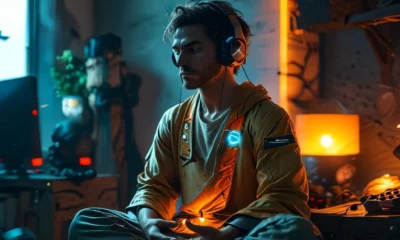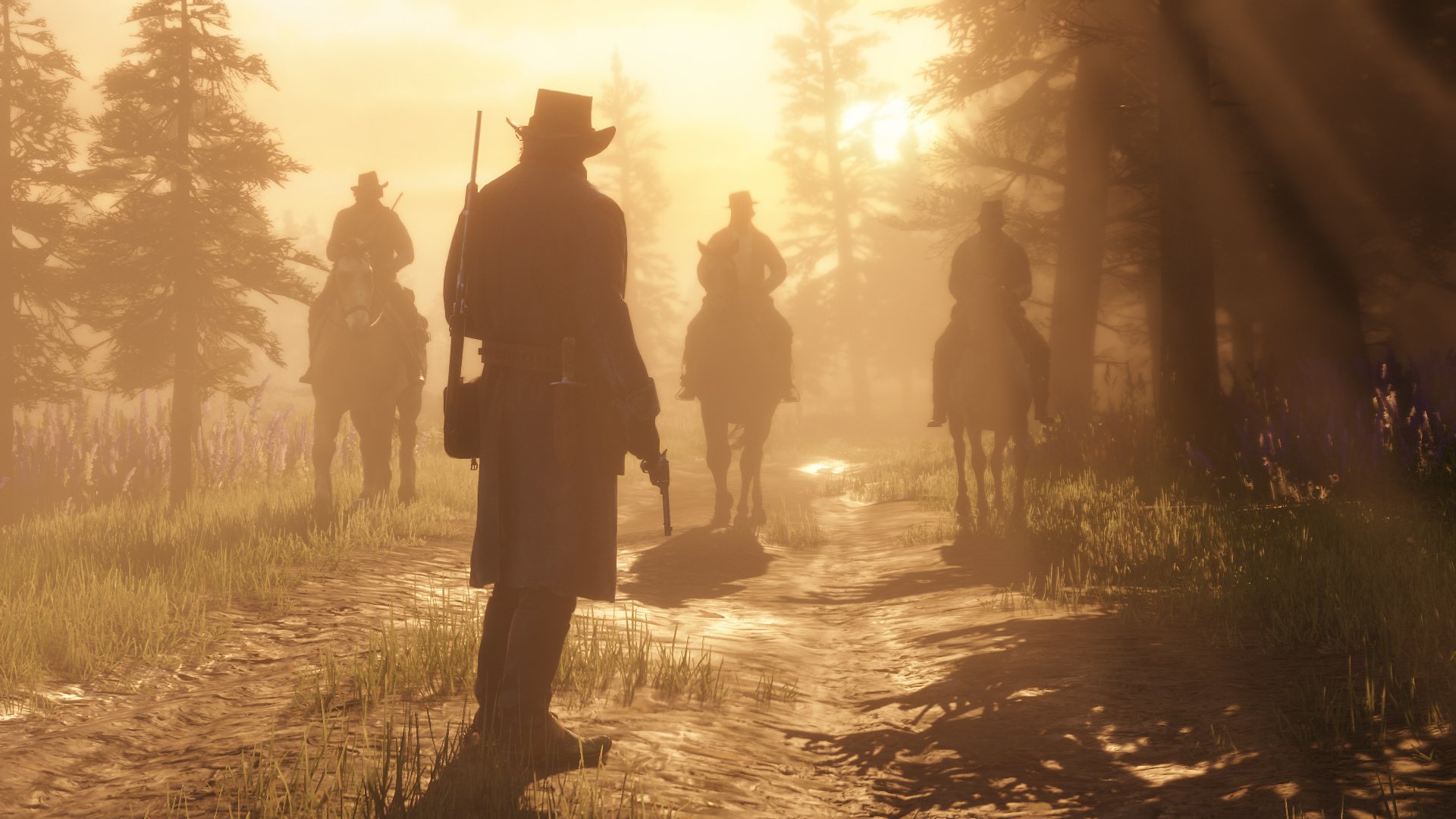Features
What Happened to the Facial Capture Technology Behind ‘LA Noire’?
https://www.youtube.com/watch?v=u8bL0z-vMHw&feature=youtu.be
It’s been six years since the release of LA Noire, with no signs of a sequel on the horizon anytime soon. The film noir-inspired thriller was developed by the now defunct Team Bondi and featured ground-breaking advancements in facial motion capture. Even by today’s standards, the level of detail achieved by the processing of actual actors performances for in-game character expressions is largely unmatched in modern games. This begs the question then, just what did happen to this seemingly revolutionary technology that lay at the heart of LA Noire?
Named ‘MotionScan’, the technology in question was developed by an Australian company, Depth Analysis, a sister company of Team Bondi. It uses 32 high definition cameras placed around the floor, ceiling and at eye-level to capture a 360 degree image of an actor’s performance from the neck up. This means the cameras capture all of the nuances of an actor’s facial movements at up to 30 frames per second. According to ‘How Stuff Works’, that adds up to about 1 gigabyte of data per second. Speaking to ‘Fast Company’ in 2011, LA Noire’s writer and director, Brendan McNamara, stated that “Once capture is complete… a resolution is defined. For games this is a lot lower than the native 2K x 2K resolution that the system captures”. This highlights how impractical the technology can be, and reading between the lines, it’s clear that the large file sizes were likely the reason the game shipped on three discs on Xbox 360. Other Rockstar open-world games such as Red Dead Redemption managed to fit onto one disc on the same platform; suggesting that the motion capture technology is what took up much of the game’s assets.
Other problems with ‘MotionScan’ likely include the cost of its implementation and in turn, the entire cost of the game. Each camera alone cost $6,000 and according to ‘Kotaku’, the overall game cost $50 million to make. As of 2010, this made LA Noire the eighth most expensive game ever produced. Furthermore, the technology itself is arguably too unwieldy, with Nathan Drake himself, Nolan North, referring to it as “incredibly inhibitive” when speaking to Eurogamer in 2011. In the interview, he went on to say “I’ve talked to some of the actors who’ve done it. You literally, especially for L.A. Noire, can’t move.“ This was then followed by Uncharted 3’s game designer, Richard Lemarchand, stating that “you also can’t riff off the other actors…” Both comments bring up a point for contention: at what cost did Team Bondi achieve the real-life likenesses on show in its motion capture? It seems that both North and Lemarchand are alluding to the fact that the group banter dynamic between Uncharted’s core cast would perhaps not be as noticeable if the Motion Scan technology was used. The latter restricts actors to playing out scenes in isolation where they can’t perform off of their co-stars – conditions which North feels would hinder Uncharted’s character dialogue.
With this in mind, has traditional style motion capture surpassed LA Noire’s ‘MotionScan’ technology? Some of the more modern examples of facial capture can be seen in games such as Naughty Dog’s Uncharted 4 and the upcoming Hellblade from Ninja Theory.
In some cases the traditional motion capture comes close to rivaling that which is seen in LA Noire, but this is arguably only limited to a few standouts. Uncharted 4 is one of those games, with an incredibly high level of polish that transcends the entirety of the game. The facial animation in particular is something that Naughty Dog has improved upon with each new release – the latest of which being Uncharted 4. North praised the work done by the animators in the same interview with Eurogamer in 2011, stating “We’ve been relying on these brilliant animators… They’ve got it down to a science. And thank god, because the performance becomes much more organic. Much more real.”
It’s clear then that the Uncharted series has a lot of talent behind it, with “brilliant animators” able to push the traditional motion capture as far as possible. More often than not however, there are games which feature middle of the road facial capture, which arguably fall flat of achieving the subtle nuances seen in either LA Noire or Uncharted 4. Two recent examples of such games include Star Citizen and Call of Duty Advanced Warfare; attempting to capture the likenesses of Gary Oldman and Kevin Spacey respectively.
It’s clear then that whilst only a few games can come close to, and possibly rival, the facial capture seen in LA Noire; it’s ultimately the practical limitations of ‘MotionScan’ which hold it back from widespread use. This amounts to the cost of its implementation, and the conditions under which the actors have to perform. For a game such as LA Noire, the technology was a perfect match, and one which was vital for the lie detection gameplay the game leaned so heavily upon. This type of gaming experience remains a unique aspect of LA Noire and one which has not been replicated since. Ultimately, the ‘MotionScan’ technology worked within the confines of LA Noire, but would prove too inhibitive for story driven games. This is particularly true for games where an actor’s full body contributes to their in-game performance.

-

 Features4 weeks ago
Features4 weeks agoDon’t Watch These 5 Fantasy Anime… Unless You Want to Be Obsessed
-

 Culture3 weeks ago
Culture3 weeks agoMultiplayer Online Gaming Communities Connect Players Across International Borders
-

 Features4 weeks ago
Features4 weeks ago“Even if it’s used a little, it’s fine”: Demon Slayer Star Shrugs Off AI Threat
-

 Features2 weeks ago
Features2 weeks agoBest Cross-Platform Games for PC, PS5, Xbox, and Switch
-

 Game Reviews4 weeks ago
Game Reviews4 weeks agoHow Overcooked! 2 Made Ruining Friendships Fun
-

 Features2 weeks ago
Features2 weeks agoThe End Is Near! Demon Slayer’s Final Arc Trailer Hints at a Battle of Legends
-

 Features3 weeks ago
Features3 weeks ago8 Video Games That Gradually Get Harder
-

 Game Reviews4 weeks ago
Game Reviews4 weeks agoHow Persona 5 Royal Critiques the Cult of Success
-

 Features2 weeks ago
Features2 weeks agoDon’t Miss This: Tokyo Revengers’ ‘Three Titans’ Arc Is What Fans Have Waited For!
-

 Guides2 weeks ago
Guides2 weeks agoHow to buy games on Steam without a credit card
-

 Game Reviews2 weeks ago
Game Reviews2 weeks agoFinal Fantasy VII Rebirth Review: A Worthy Successor?
-

 Uncategorized3 weeks ago
Uncategorized3 weeks agoSleep Meditation Music: The Key to Unwinding

















